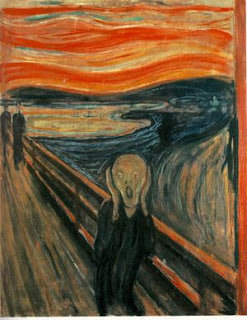"Margin spirals", non-linearity and "band-aid" theories

From the weekend FT, by Krishna Guha, a fairly comprehensive review of the continuing credit market woes and the desperate attempts of the FED. I will actually skip on the analysis of the FED action and focus on the dynamics.
From the FT
Fed officials see a double squeeze taking place, with banks pulling back on their capital at risk in the face of balance sheet strains, while hedge funds and other investment vehicles are being forced to deleverage and sell assets amid margin calls from anxious lenders.
Distress sales by funds have in turn pushed asset prices lower, triggering fresh rounds of margin calls - a so-called "margin spiral".
Feedback loops, known sources of non-linearity in physics are known in economy as "downward spirals", "vicious circles" when the markets go down and "virtuous circles", when they go up. The strategy of "momentum investing", up attracts up, down attract down, while mostly psychology driven finds its roots in this mathematical feedback a.k.a non-linearity.
In physics they are well understood in phase transition phenomenas for example. They are usually violently dynamic events, driven by thermodynamics and are really "transitional dynamics". The system transitions from an equilibrium at higher energies, to a lower equilibrium and does so very fast. Think of a pin resting on its head, in theory it could rest at equilibrium, in practice a slight push will beget more push (gravity is not balanced on the axis) and the pin falls.
What if the deleveraging is a new equilibrium. If M2/debt/money is energy (to be invested) then the violent deleveraging is driving these transitions. We are transitioning to a lower M2 level, less leverage. Then let non-linearities, the feedback loops, HELP IN THE TRANSITION. They are not intrisically wrong they are part of the dynamics.
In fact they may be beneficial. Just finished Greenspan's book, in there he has a rather damning analysis of the policy of the Japanese govt and the banks during the 90's credit and housing crisis. No one wanted to lose face, so the losses were slow to be recognized and so the transition took forever because of intervention and banks not calling in the loans, waiting for a recovery, which never materialized. It took them 10 years of recession and deflation to get out of it.
Last week was full of such calls by analysts and wall street pros: basically calling t to the FED to save them, bail them out. Arguments usually focused on non-linear phenomenas resorting to scare tactics. Obviously, non-linear dynamics can lead to "breakdowns" as opposed to new equilibriums. Avoiding breakdowns (bank run?) is desirable, but who is to call them? many of them may be benign even beneficial. Over-meddling with the spirals, altering the natural dynamics of a self-adjusting market may not be.
Assuming there is a new equilibrium after deleverage of M2, as opposed to a systemic breakdown, getting there as quickly as possible is the best thing we can do. The spirals are getting us there in a hurry.
That is where the band-aid analogy comes in, not the applying the band-aid, but actually removing the band-aid: it hurts, but the faster you do it the better. Of course if by removing the band-aid you remove a pound of flesh with it, and you systemically kill the patient, then it is not good. Until we figure which is which, can we sustain the screams?


Comments
does that read "A typical" or "Atypical", maybe you mean it as a pun?
In the meantime, the Fed has mistakenly (IMHO) tried to stop the bleeding by lowering rates. But the Fed is impotent - it can SLOW the pace of markdowns but not STOP them. It's misguided easing is helping to inflate yet another bubble just as the credit bubble is deflating. The new bubble is in commodities (gold, oil, corn, ...). When will the new commodities bubble burst? Who knows, but some day it WILL burst, as all bubbles must.
Wayt
I think it is the markdowns themselves that are triggering the crisis. Illiquidity begets artificially low market prices, begets mark to market markdowns begets more illiquidity... is this a good spiral? Are they "real" losses. The only real losses were the subprime ones, today banks are forcing losses at hedges and cashing in the collateral at crap prices which will revert back to real prices when the dust settles. The banks will have bullied the hedgies into covering for their bad subprime losses. Way to spread the damage!